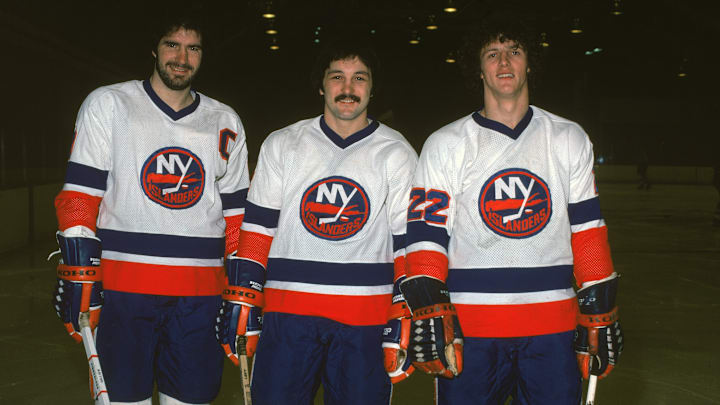G- Billy Smith

Selected by the Islanders in the 1972 expansion draft from the LA Kings, Billy Smith became the backbone of the team's Stanley Cup runs.
Before taking control of the crease in 1980, Smith backed up longtime netminder Chico Resch for his first 4 seasons on Long Island. Once he owned the space between the pipes, Smith became one of the league's best goaltenders, policing his crease like no other.
For those who dared to step near his crease, Smith made sure opponents didn't make the same mistake twice. With his stick used as a baton at times, Smith had no issue chopping at anyone's legs, back, knees, or anything within reach to let opponents know he owned the space surrounding him.
Once Smith became the everyday goalie, The Islanders began their streak of four consecutive Stanley Cup victories and five straight visits to the finals. Though his regular season numbers were rather pedestrian, Smith showed his clutch gene when the playoffs rolled around, especially during crunch time.
For his playoff performance in 1983, Smith was named winner of the Con Smythe Trophy for the MVP of the playoffs. In 17 games, the Perth, ON native posted a 13-3 record with a .913 SV%.
Aside from his Stanley Cups and Con Smythe Trophy, Smith also managed to bring some regular season hardware back to Long Island. In the 1981-82 season, Smith was the winner of the Vezina Trophy for the league's best goaltender in the regular season. The following season, he won the William M. Jennings Trophy along with crease-mate Roland Melanson for the fewest goals against throughout the season.
Aside from his typical job of stopping pucks from entering the net, Smith was also credited with the first-ever goal for an NHL goaltender. After a delayed penalty was called against the Isles in their 1979 matchup against the Colorado Rockies, Smith made a save that deflected to the corner. Rockies forward Rob Ramage made a misplaced pass to the blue line, which ended up in the back of the Rockies net. As the last Islanders player to touch the puck, Smith was credited with the goal.
Smith played 16 seasons with the Islanders, hanging up the pads following the 1989 season. In 1993 he was elected to the Hockey Hall of Fame and had his number 31 retired by the Islanders. With 674 to his name, Smith has more than double the amount of wins than any other goalie to wear the blue and orange.
